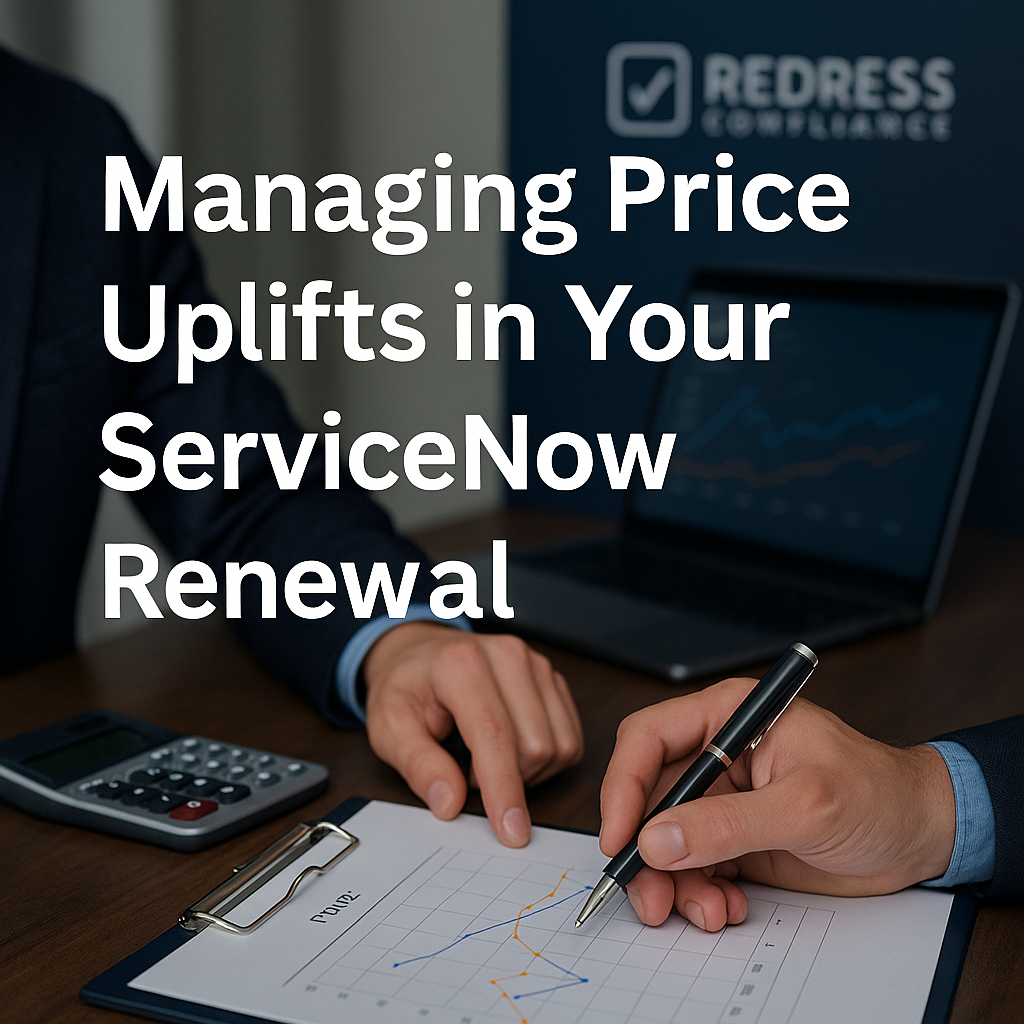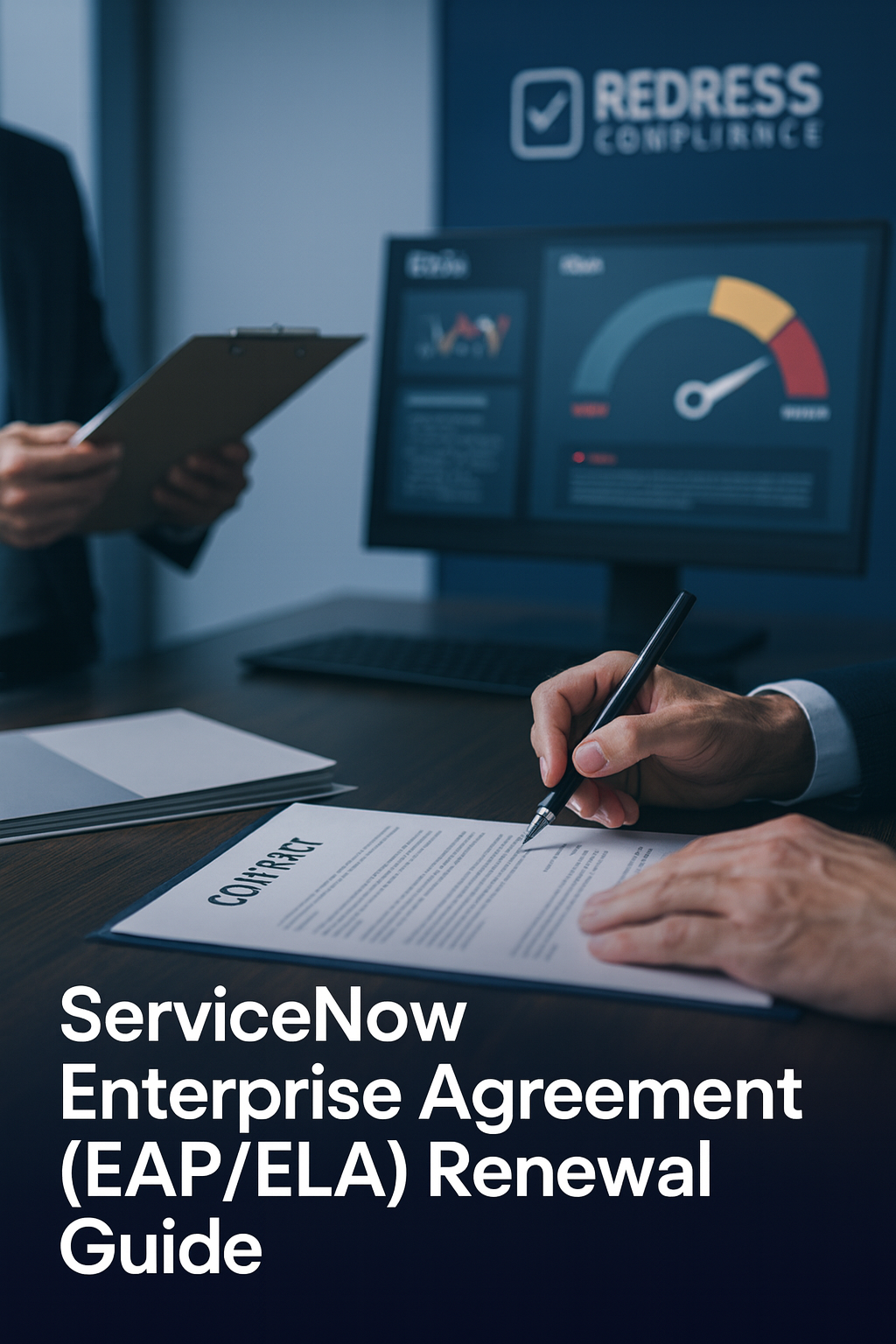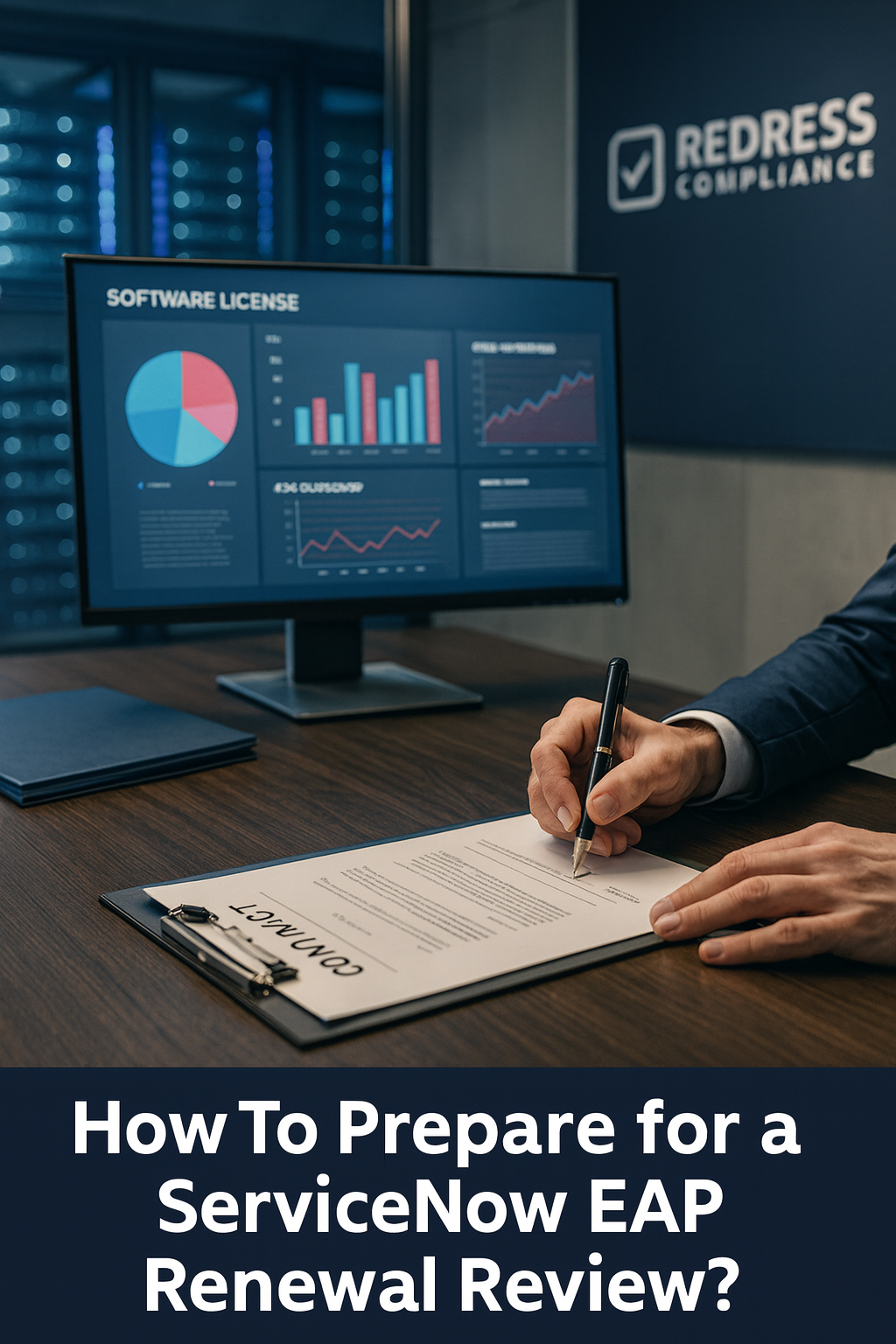How to Manage Price Uplifts in Your ServiceNow Renewal
Facing a ServiceNow renewal price increase can feel like a gut-punch to your IT budget. You’re not alone—many organizations open their renewal quotes to find a 5%, 7%, or even higher uplift that they didn’t see coming. The good news is that uplifts are not automatic or unavoidable. With the right approach, you can push back on these hikes, negotiate better terms, and protect your budget.
Let’s break down why ServiceNow applies these price uplifts and, more importantly, how you can contain or eliminate them in your next Enterprise License Agreement (ELA) or EAP renewal negotiation.
Read our ultimate ServiceNow Enterprise Agreement (EAP/ELA) Renewal Guide.
Why ServiceNow Increases Prices at Renewal
ServiceNow routinely attempts to raise subscription prices by 5–7% per year when your contract comes up for renewal. They’ll cite reasons like “keeping up with CPI (inflation),” “added platform value,” or “updated list pricing.” Some uplift clauses might even be written into your master agreement, but often these increases are not strictly required by your contract. In many cases, the annual hike is a discretionary move by the sales team to boost revenue, presented as if it were standard or automatic.
ServiceNow’s logic goes like this: their costs (cloud infrastructure, R&D, support) rise over time, and they continuously add new features to the platform – so they argue a moderate price bump is justified. However, unless your agreement explicitly obligates a price increase, that rationale is just sales talk. The truth is, if your usage hasn’t grown or your contract doesn’t have a fixed escalation clause, you have grounds to challenge any renewal uplift.
Mini-Scenario: A global bank received a renewal quote with a 6% “standard adjustment” uplift – yet nothing in their contract required a price increase. The procurement team questioned it and stood firm that no contract clause obligated any hike. Faced with losing the deal, ServiceNow dropped the 6% uplift entirely to keep the customer’s business.
Pro Tip: If it’s not written in your agreement, it’s negotiable — no matter how confidently your rep insists “everyone gets this increase.” In software deals, nothing is automatic unless you agree to it.
Types of Uplifts You Might Encounter
Not all price increases are labeled the same way. ServiceNow might present different types of uplifts depending on the situation. Here are the common ones and how to handle each:
| Uplift Type | Typical % | Where It Appears | Negotiation Approach |
|---|---|---|---|
| CPI-based (Inflation) | 2–5% | Renewal clause or price schedule | Ask to cap at 2% (or freeze for year one) |
| Fixed % Increase | 5–7% | ServiceNow renewal quote | Counter with your prior pricing benchmark |
| List Price Reset | 10%+ | When a prior special discount expires | Request renewal discount carryover (same pricing as last term) |
| Support Escalation | 5–15% | Maintenance/support renewal terms | Cap the support uplift or convert to a fixed fee |
| Multi-Year Step Pricing | ~5% per year | Multi-year deal (annual stair-step) | Negotiate a flat rate, or only step up with added usage |
Every uplift has a different name, but they all mean one thing: you pay more for the same usage. Use the table above to identify what kind of increase you’re facing and guide your response. For example, suppose you see a “list price adjustment” on your quote. In that case, it likely means ServiceNow is trying to remove or reduce a discount you had previously, which you can counter by demanding that the old discount or unit price be extended into the renewal.
Dissecting the “CPI” Myth
Perhaps the most common rationale you’ll hear is “it’s just a CPI adjustment.” ServiceNow reps often invoke the Consumer Price Index as an impartial reason for a price hike. But here’s the catch: the uplifts they propose often exceed real inflation. Some contracts even say something like “CPI or 5%, whichever is higher.” In other words, if inflation is low, they still want 5% by default.
Don’t accept that without scrutiny. If a CPI-based uplift is in your contract, insist on a realistic cap. For example, negotiate language like “prices shall not increase by more than 2% or actual CPI, whichever is lower.” If your agreement doesn’t mention CPI at all, then any so-called inflation increase on your quote is entirely negotiable – you can and should challenge it.
In fact, some savvy customers have even convinced ServiceNow to cap CPI-based increases around 2% by offering something in return (such as a longer renewal term). This proves that if you push back, the vendor can move off their standard approach.
Pro Tip: If a CPI clause is included, set a ceiling on it. And if no CPI clause exists, don’t let a surprise “inflation adjustment” line item slip into your quote. No clause, no automatic increase.
When List Prices Reset
Another tactic you might encounter is the dreaded “list price reset.” This happens when you originally negotiated a big discount or promotional pricing that kept your costs low in the initial term. At renewal, the sales rep comes back and says your special discount has expired, and now they have to bring you back to list price – resulting in a double-digit percentage jump in cost.
Know that this “reset” is a sales strategy, not a requirement. ServiceNow isn’t compelled to charge you more just because your last deal was favorable. In fact, you should treat renewal discount continuity as the default: if you bought 1,000 licenses at $80 each last time (after discount), then $80 is your baseline for future purchases. Unless you’re increasing the scope or changing products, there’s no reason you should suddenly pay $88 or $100 for those same licenses.
So, how do you counter a list price reset? Come armed with data. Pull out your original order form and note the unit prices and discount levels you had. If your renewal quote shows higher numbers, ask why. Often, the rep will say, “That was a one-time discount.” You can reply that maintaining price parity is essential for your renewal. Request that they carry over the same discount into the new term, or even improve it if your usage stayed flat (after all, if you plan to grow usage, that should earn you a better volume rate, not a price hike).
In short, renewal pricing should reward loyalty, not punish it. If you’re just renewing what you already have, there’s no valid justification for paying more. The onus is on ServiceNow to prove why a price increase is warranted — and if they can’t, you should insist on keeping prices flat.
Using Multi-Year Terms to Control Costs
One way to get leverage against annual uplifts is to negotiate a multi-year deal. ServiceNow loves the revenue certainty of a longer commitment, and you can use that to your advantage to secure better terms. Multi-year agreements can lock your pricing so you’re not hit with a new increase every year.
For example, you might aim for a 3-year renewal at a flat rate, meaning Year 2 and Year 3 pricing stay the same as Year 1. If ServiceNow resists a completely flat deal, push to limit any year-over-year increase to a token amount (say 2% or less). And if even that small uplift is on the table, make them earn it: ask for something in return, like additional licenses, an extra module, or a longer subscription term at no extra charge.
Mini-Scenario: A U.S. healthcare company was initially quoted a 3% uplift in year two and another 3% in year three of a renewal. They pushed back hard for a flat price. In the end, the customer agreed to the 3% year-two increase only after ServiceNow added extra HRSD module licenses for free and extended a year of premium support at no cost. Year three’s price then remained flat. Essentially, the customer traded a small uplift for additional value, neutralizing the financial impact.
Pro Tip: If you can’t stop an uplift, make it earn its keep — tie any price increase to added value or functionality for your organization, not just empty “inflation” rationale. Never agree to pay more and get nothing new in return.
Challenging “Automatic” Uplifts
A common misconception is that renewal increases are pre-programmed and unavoidable. Sales reps might shrug and say, “All customers get a 7% bump, it’s automatic.” Don’t be fooled. There is always a person behind the price, and any price that was set can be changed if the deal’s on the line.
Remember, ServiceNow’s primary goal is to keep your business running smoothly. If a standard policy is threatening to drive you away, the company often has discretion to adjust or remove it. So if you’re told “this uplift is standard for everyone,” push back.
Ask them to show you where it says that in your contract (spoiler: it usually doesn’t). Ask why they believe your account merits an increase – especially if your usage hasn’t grown or you’re considering reducing scope. Often, the rep will have no answer beyond “that’s just policy.”
At this point, don’t hesitate to escalate. Talk to a sales manager or director and reiterate that you’re prepared to explore alternatives or cut back services if the renewal isn’t reasonable. Many times, what was “automatic” magically becomes flexible when a deal might be lost. In short, no renewal hike is truly set in stone. If you stand your ground, ServiceNow can find a way to override the system and adjust the price.
How to prepare for the ServiceNow renewal, How to Prepare for a ServiceNow EAP Renewal Review.
Adding Price Cap Clauses
The best way to handle future uplifts is to prevent them upfront. If you’re negotiating a new ServiceNow agreement or renewal, try to include a price cap clause. This is a contractual limit on how much prices can rise at renewal, giving you cost predictability.
For example, you can add language stating: “Pricing shall not increase by more than 2% per year or the actual CPI, whichever is lower.” This kind of clause locks in the maximum uplift. Even if ServiceNow later tries to raise list prices or apply a standard increase, your contract caps it.
Many enterprises negotiate something like this—it’s not unusual, and ServiceNow will often agree if pressed, especially for large or multi-year commitments.
You could also seek a price hold for the first renewal year (i.e. 0% increase at your first renewal) as part of a new deal. And if you’re already mid-contract without any cap, it’s worth discussing an amendment to add one when you renew or expand your agreement.
Pro Tip: Locking the ceiling is far easier than lowering the floor later. Secure a cap before signing. It’s much simpler to prevent a 7% hike with a clause now than to fight it during renewal after your contract is in place.
Using Data to Challenge Uplifts
When facing a renewal increase, make your case with hard data. Look at your own usage and value metrics:
- Usage flat or down? If your number of licenses or transaction volumes haven’t grown since the last term, why should you pay more for the same capacity?
- Inflation reality check: What’s the actual inflation rate in your region over the contract period? If it’s 3% and ServiceNow wants 7%, that extra 4% is pure markup, not a “cost of living” increase.
- Vendor comparison: How are your other major software vendors handling renewals? If most of them aren’t imposing similar hikes (or maybe gave you price protections), bring that up. For example, “Our other SaaS providers kept costs flat last year; we expect the same consideration from ServiceNow.”
By presenting evidence – flat usage, low inflation, industry norms – you flip the script and force ServiceNow to justify any price increase. It’s hard for a sales team to argue with facts. At the very least, this approach strengthens your position to negotiate a much smaller uplift than the one quoted.
Always anchor your negotiation in specifics. Don’t accept a vague statement that “prices are going up.” Pin the rep down on why. Often, they won’t have a solid justification. That’s when you press for no increase at all, or perhaps a token one that aligns with a real metric. Remember, if ServiceNow’s cost to support your account hasn’t significantly increased, your price shouldn’t either. Use your internal data as the baseline to challenge any arbitrary hike.
Embedding Renewal Protections in the Contract
Finally, make sure your contract itself is set up to guard against unfair uplifts. Beyond the price cap clause, consider adding a few more renewal protections:
- Usage-based price review: Include language that ties renewal pricing to your usage. For instance, “If actual license utilization is the same or lower at renewal, the per-license price shall not increase.” This ensures you’re paying for value, not just vendor targets.
- Advance notice of increases: Require ServiceNow to notify you 90–120 days before renewal if they intend to raise prices. This gives you time to negotiate or seek alternatives. If they fail to provide notice, specify that your prices will remain unchanged.
- Defined inflation index: If you do allow an inflation-based adjustment, define exactly how it’s calculated (e.g., “based on the U.S. CPI-U, averaged over 12 months, capped at 2%”). Don’t let them use a vague “cost of living” clause with no details.
- Discount carryover: Ensure the discount percentage off the list price that you negotiated initially will carry through to equivalent renewal quantities. This prevents the “list price reset” issue by guaranteeing you keep your negotiated discount level.
- No unilateral changes: Strike any wording that gives ServiceNow discretion to change pricing or terms on a whim. Phrases like “at ServiceNow’s sole discretion” have no place near your pricing clauses. Your costs should be governed by mutual agreement, not one-sided decisions.
By baking these protections into your ELA/EAP, you won’t be caught off guard at renewal time. You’ll have a contractual footing to keep increases in check or to reopen negotiations if something doesn’t align with the agreed terms. It’s far better to have these safeguards in writing than to rely on verbal assurances or goodwill later.
How to negotiate your renewal, Securing Maximum Discounts in Your ServiceNow ELA Renewal.
Five Actions to Contain Renewal Uplifts
To wrap up, here’s a quick checklist for containing those dreaded renewal price hikes:
- Audit Your Contract: Check what, if any, uplift clause exists. If there’s no explicit increase provision (or only a vague one), know that any hike is negotiable.
- Request CPI Data: If an uplift is presented as inflation, ask which index it’s tied to and demand to see the numbers. Make them prove the math.
- Negotiate a Ceiling: Don’t settle for open-ended increases. Propose a reasonable cap (e.g. 2% or actual CPI, whichever is lower) and get it in writing as part of the deal.
- Anchor on Your Data: Use facts like flat usage or lower demand to refute any supposed need for a price increase. If your usage is flat, your renewal price should be too.
- Secure Future Protection: Lock in price protections now for upcoming years – add caps on uplifts and advance notice requirements so you’re not ambushed at the next renewal.
Uplifts are not destiny — they’re a negotiation strategy. Know the math, cap the clause, and make inflation your tool, not ServiceNow’s.
Read about our ServiceNow Negotiation Services


